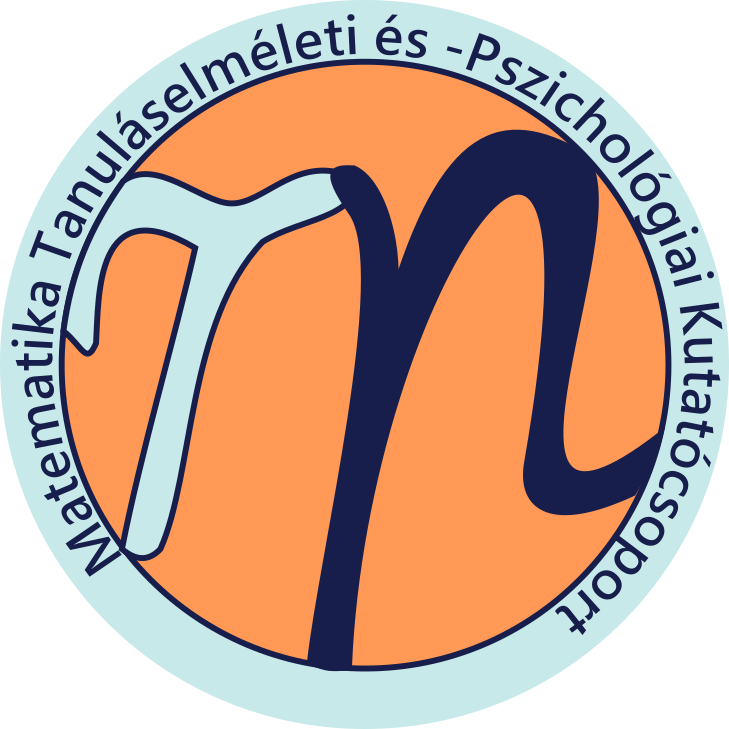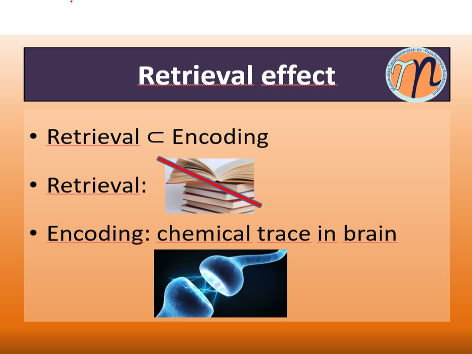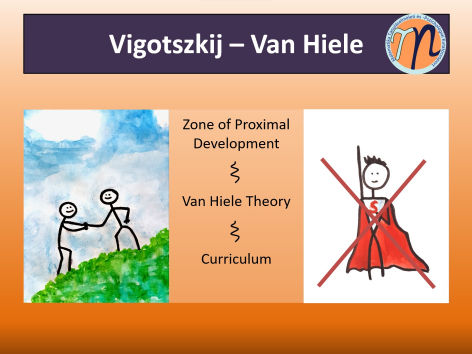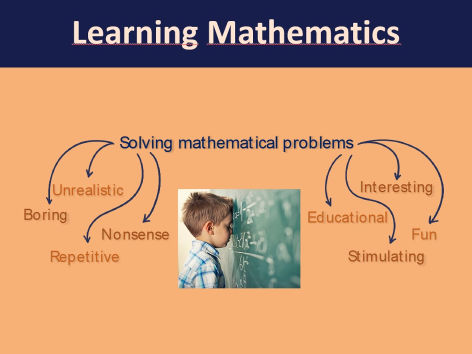Research

Research Topics of MTA-ELTE Theory of Learning Mathematics Research Group:
Retrieval effect

It is a well-known phenomenon in education that a lot of students forget most of the learning material soon after an exam. Or, they seem to understand and know something in one lesson and in the next lesson, they don't even remember talking about it. This is problematic, as they should be able to use, apply and expand their knowledge instead of losing it. So, the following question arises: how can forgetting be slowed down or even prevented?
Research has shown that the key to long-term knowledge is retrieval. Unless the learned material is consciously reviewed, people forget about half of the newly gained knowledge within days or weeks. Retrieval practice works against forgetting. Retrieval practice - also called test-enhanced learning - is a learning strategy where our focus is not on getting information “in”, but on getting information “out” of students’ heads. It can refer to any activity (such as questions during class, quizzes, flashcards, brain dump, and examination questions) that requires retrieving information from memory without the help of any external sources.
Retrieving information requires mental effort. Through this effort, learning takes place. Knowledge acquired by retrieval practice is more resistant to interference effects and leads to a lower forgetting rate. In addition, it has a promoting effect on learning: it produces better organization of the acquired knowledge, enhances its transfer to new contexts, and produces faster access to learned information. Retrieval practice is one of the most powerful learning strategies. Its further advantage is that it doesn't need advanced technology or financial resources - it only needs a little bit of time and effort.
In a previous experiment, we showed that test-enhanced learning can be implied in secondary mathematics education. We incorporated test-enhanced learning into mathematics lessons by having students in the experimental group write an end-of-class test on each lesson, where they solved problems related to the topic of the given day. In another experiment, we demonstrated the testing effect in a first-year mathematics course at a university. Also, our recent study shows that retrieval practice can be effective in the long term, even when learning abstract mathematics. In future research, we intend to test this method on a larger sample in different schools, investigating its effect on mathematics anxiety and attitude.
Developing competencies with boardgames

Board games are in the midst of a renaissance: board game cafés are opening, and every week more creative, more colourful board games are appearing on the market. Plus, many teachers themselves create themed games to teach a topic. Brain research in recent years has confirmed teachers' intuition that board games are a way of developing students.
In recent years, research using brain imaging has shown that two of the most important brain areas for mathematical performance can be developed through board games. One of these brain areas is the prefrontal cortex, which is responsible for, among other things, reasoning and strategic thinking. Modeling skills play a significant role in mathematical thinking, which is also positively influenced by board games. Research in cognitive neuroscience suggests that play can be used to develop students' reasoning-, logical-, problem-solving- and cognitive skills.
In our research, we are exploring which board games can be used to develop which mathematical skills at which ages. We also investigate how board games affect students' mathematics anxiety and motivation. Our research has shown that students in grades 9-10 can develop their logical and geometric skills by spending one of their three or four maths lessons a week on board games. In doing so, the board game groups did not fall behind in the regular curriculum compared to groups who did the regular curriculum in all maths lessons of the week. The groups are able to keep up with the curriculum at the same pace and perform at least as well on tests, despite spending less time on regular maths learning and practice. In addition, the maths anxiety and attitudes of the participating students are reduced.
Problem posing

In life as well as in school, we encounter numerous problems to solve. Whether it's planning a trip, preparing a weekend menu, the artful crafting of an essay, or solving a mathematical problem, we usually don't solve these problems in one single attempt. Rather, we break them down into sub-problems and trust that solving these sub-problems will lead us to the final solution. Thus, during problem-solving, we often raise problems ourselves, creating sub-tasks that we need to solve on our own. The ability to pose good problems is a useful component of effective problem-solving.
An essential part of mathematics education is to present problems and tasks that help students engage with mathematical thinking and enhance their problem-solving abilities. The question arises: where do these "good" problems come from, who creates them, and through what methods? The study of problem posing seeks answers to these questions.
For future mathematics teachers, it is crucial to learn how to create tasks of appropriate level and quality for their students since textbooks often lack problems suitable for every student's level of mathematical understanding or area of interest. Developing problem posing skills in students is not primarily important so that we can compile sets of exercises or even textbooks from their own posed problems. Instead, it is important because engaging in problem posing has been proven to enhance students' mathematical knowledge and in addition, develop their problem-solving skills.
The investigation of mathematical problem posing is a relatively new but increasingly prominent branch of mathematics education research. More effective problem posing leads to more efficient problem-solving. In our research, we focused on the problem posing abilities of prospective mathematics teachers, as well as students in public education, using various problem posing strategies.
This is particularly important in Hungary, where problem-solving and problem-centered mathematics education have a strong tradition (Tamás Varga, György Pólya).
Gamification

In our present days, many students are facing difficulties due to the multitude of stimuli surrounding us, often causing their attention to wander. Traditional teaching methods often no longer capture their attention effectively or only do so for a short period. However, in order to enhance students' performance and support their progress, it would be essential to cultivate a sense of commitment within them towards the curriculum and subjects.
In the 1970s, Mihály Csíkszentmihályi discovered the concept of the flow experience, which, according to his research, is essential for human happiness but is rarely experienced in everyday life. The flow experience reduces harmful stress, increases creativity, productivity, and commitment. His research revealed that play is the most effective means to achieve the flow experience.
Concurrently, game developers noticed the extent of effort people were willing to invest through video games. In the early 2000s, individuals like Jane McGonigal began exploring how the positive emotions experienced during gameplay could be integrated into everyday life. These two lines of research later converged, giving rise to gamification.
Stamps, stickers, reward points, competitions – these are fundamental components of the teacher's toolkit for introducing an element of playfulness even into the driest lessons. And yes, both primary and secondary school students can be mobilized when there's a fun stamp at stake! This type of motivation for students is not universal but also not rare. Initially, gamification referred to the use of game elements. The most comprehensive definition of gamification today is from Huotari and Hamari in 2017: "Gamification is the process of enhancing an activity by creating game-like experiences to promote user value creation." Over the past decade, gamification has achieved tremendous success in companies and is gaining increasing importance in education and didactic research.
It's important to consciously select these playful elements and preferably frame them. Reward methods and tools used by subject teachers often fail to motivate every student, as students are not uniform. Students can only be engaged through game elements that motivate them personally. Additionally, many teachers have experienced that otherwise successful gamification systems can impose an unbearable amount of burden.
Therefore, in our research, we are investigating what makes a gamified system successful and what effects can be achieved in the realms of academic performance, mathematical motivation, anxiety, and dropout rates. Moreover, we aim to create a teaching guide that helps educators design a well tailored gamified framework for their groups while minimizing their burdens. In our research conducted among students majoring in mathematics education, we managed to enhance their performance, commitment, and reduce dropout rates in one of the most challenging courses of their first year of study.
Levels of thinking, adaptive development

In the first half of the last century, Lev Semyonovich Vigotsky formulated a principle that keeps being relevant nowadays and should not be ignored: 'If we want to develop the child's abilities and accelerate his development, we must start from the level at which the child is at the moment, i.e. the expectations must be adapted to the child's abilities and needs'. So, a necessary condition for effective teaching is to know the student's background in knowledge and thinking.
We can have tutorials, consultations, recite the material a hundred times, but the knowledge transfer process cannot be effective if we "talk over the student's head". Therefore, the first step in development should be to assess the level of understanding of the students. This determines a common language for knowledge transfer. The creation and elaboration of this common language is the teacher's task.
An accurate knowledge of the level of understanding is therefore necessary in order to know where to start the teaching process, how to structure it, and what language to use. One of the most important implications of the theory is that the use of an inadequate level, either in terms of language or content, leads to stagnation in terms of level. In other words, in this case, the student is unable to progress in spite of the teacher's and his/her own efforts. This has been confirmed by our research with both public and higher education students.
Based on Vygotsky's theses, Pierre van Hiele and Dina van Hiele-Geldorf developed a theory in 1957 that captures one of the most important elements of mathematics education. According to this theory, there are levels of understanding in all areas of mathematics and these levels can be acquired in succession. There can be no level leap, one can only reach a level after mastering the previous one. The aim of the teaching process is to take students step by step to the next level. There is an internationally known and recognised test for measuring geometric levels, which helps to assess the level of the learners. In our research, we are investigating possible extensions of the Van Hiele levels and the construction of algebraic levels, mainly for students in grades 7-12. Our most recent results, based on a survey of university students, confirm that the theories of Vigotsky and the Van Hiele couple are valid not only at the secondary school level but also at the university level.
Interlieved practice

In standard classes a typical assignment consists of problems that can be solved by the same strategy, for example solving a dozen linear equations in a row. This setting usually lets students know the strategy for each problem before they even read it. Many students run through a blocked assignment and then mistakenly conclude that they can solve the problems. Then, in the tests they fail to solve the same kind of problems when they do not know the startegy in advance.
When practice problems are arranged so that consecutive problems cannot be solved by the same strategy, is called interlieved practice. This way students are forced to choose a strategy on the basis of the problem and apply the method to solve it.
There are many questions and possible considerations in terms of implementing interleaved task sequences in mathematics education, such as: What are the possible limiting or facilitating factors of its efficiency; what are its positive (or possibly negative) effects on performance, skills, anxiety, thinking processes; what is the long-term effectiveness of the method; to which extent it is effective among different age groups, and does it depend on the type of school; which subject can be interwoven with which other subjects to further enhance the positive effect, whether it can be used for theory or mainly for tasks; whether there is a difference between interweaving different subjects and interweaving different types of tasks within a subject, etc. The aim of the project is to identify which aspects are most relevant for the application in practice in public education and to identify as many of these aspects as possible.
